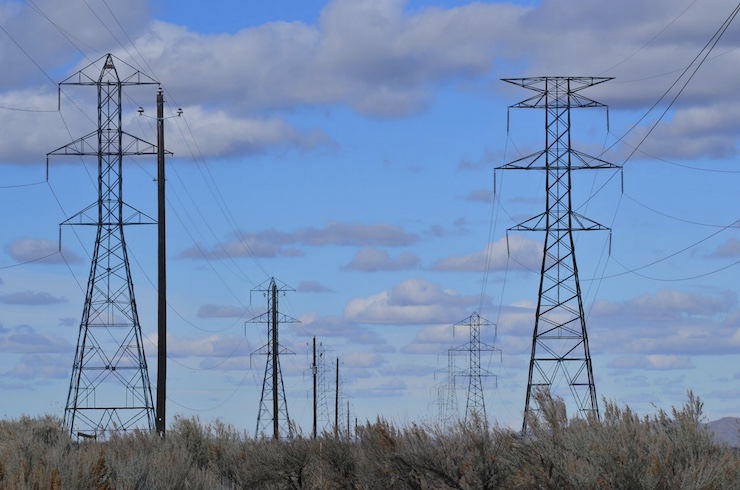Company Linebird Uses Drones to Inspect and Repair Powerlines

A few weeks ago, I was driving down the highway with my children. All of a sudden, 6 state trooper SUVs joined us on the road. The troopers created a formation around the traffic to herd and corral us to a stop. Confused as to why we were being stopped, myself and the other drivers started looking around. Suddenly we notice utility baskets with people in them slowly moving along the power wires that stretch across the highway. The average height of a powerline is around 20ft. These lines were closer to 100ft to allow clearance for an overpass. I couldn’t help but think that there has to be a safer and easier way to inspect powerlines.
Apparently, I am not the only one who feels that way. For some time now, utility companies have been using drones to inspect miles of line. The drones can give inspectors a bird’s eye view without ever having to leave the ground. Not only do drones keep linemen safer, but the inspection process is greatly sped up as well. A drone can inspect in a matter of minutes what could take a lineman hours to do. The drones transmit real time images so the inspector can see any immediate concerns. All the images are also stored to be further analyzed and compared for future reference.
While more and more utility companies are turning to drones for safer inspections, a lineman is still needed to physically make any repairs, even if it’s 100ft in the air. In 2019, a Virginia Commonwealth University (VCU) engineering student founded a company that could safely keep linemen on the ground and uses drones to make actual repairs on lines.
Ever since he was young, Michael Beiro was fascinated with robotics and engineering. As part of his independent research studies at VCU, Michael began working with local companies. His job was to use engineering to solve problems, including how to use drones to tackle problems faced by power utility companies. Michael had a concept that would engineer a drone that could safely and physically engage with powerlines, and his company Linebird was born.
Michale brought in the co-founders of RVA Aerial, Chase Coble and David Schul, who have years of expertise working with drone systems and regulations. Together they developed the Osprey Nonconductive Payload System (NPS) that has already been vetted to work seamlessly with 3 different heavy lift drones. A triangular frame dangles power-protected cables from the undercarriage of the drone. At the end of the cables is a modified lineman tool, Ohmstik, made by SensorLink. As one of the most trusted companies supplying the tools needed for utility maintenance, SensorLink is also Linebird’s primary investor.
A certified drone pilot and lineman can quickly deploy the drone to inspect powerlines and make repairs. Osprey NPS has been tested and proven to have the ability to come in contact with powerlines with no consequences. With the Ohmstik tool, the lineman can actually repair splice and dead-end connectors while remaining safely on the ground. “As power systems age, failures will increase,” Michael said. “Our goal is to solve this problem by providing safe, practical, and cost-effective means for assessing the health of critical power grid infrastructure in an entirely new way.” Using a drone to inspect and repair powerlines can change how utility companies provide energy to customers while keeping employees and the public safe.
|